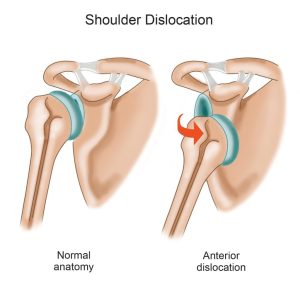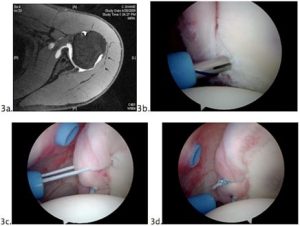SHOULDER DISLOCATION
What keeps My Shoulder Stable ?
The shoulder joint is a ball and socket joint. It is designed to give a large range of movement to allow you to move your arm and hand. It has a large ball (head of humerus) and a smaller, shallow socket (glenoid). The advantage of this design is that a very large range of movement at the shoulder is possible, the disadvantage however is that the shoulder can become unstable.
Shoulder stability is controlled by various structures. The most important ones are:
- Ligaments; which hold the bones together
- A rim of cartilage; called the Labrum which deepens the socket and gives stability.
- Muscles; which keep the shoulder blade and joint in the correct position when moving or using the arm.
What Is Shoulder Dislocation ?
- Injury: It is commonest cause of dislocation, most frequently encountered in young adults. Following a traumatic injury to the shoulder, the ball may come completely out of the socket and dislocate at the front of the shoulder.
- Neurological disorders: Like Epilepsy, or even electric shock may result in a dislocation, more commonly at the back.
- Systemic Laxity: A small group of patients have more elasticity in their tissues, making the shoulder and other joints unstable even without injury.
As a result of dislocation, the structures in the shoulder are often damaged. This may lead to recurrent symptoms of instability, particularly when the arm is lifted upwards and outwards. If your symptoms have not improved with Physiotherapy, lifestyle and hobby modification- you will benefit from surgery.

What Is The Procedure And What Does It Involve ?
Do I Need To Wear A Sling ?
When Can I Participate In My Leisure Activities ?
Your ability to start these will be dependent on the range of movement and strength that you have in your shoulder following the operation. As a general rule, the following timelines apply:
- Cycling – 4 to 6 weeks.
- Swimming – 12 weeks.
- Light sports/racquet sports using non-operated arm – 10 weeks.
- Racquet sports using operated arm – 16 weeks.
Contact or collision sports which includes horse riding, football, martial arts, rugby, racquet sports and rock climbing – 6 months. Discuss with the Consultant.


